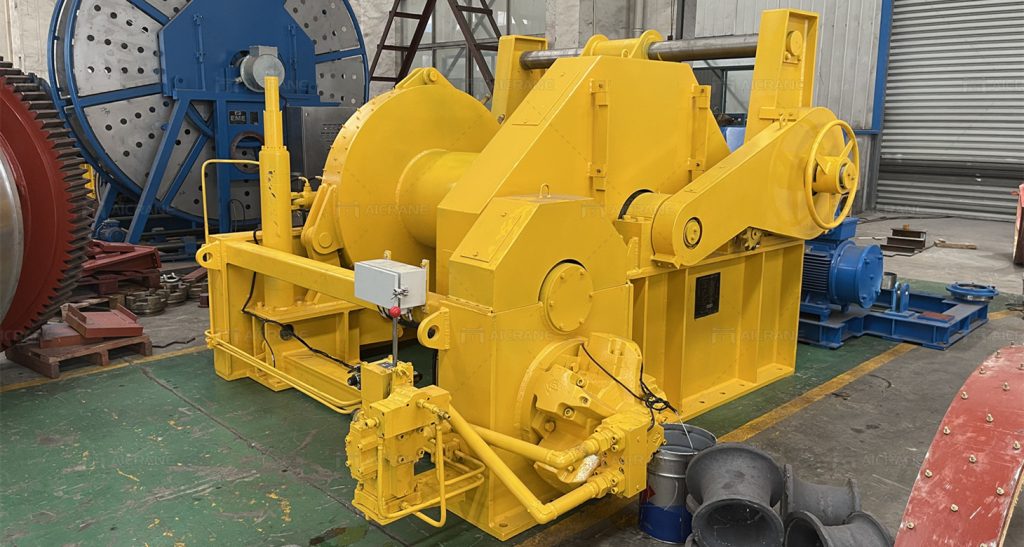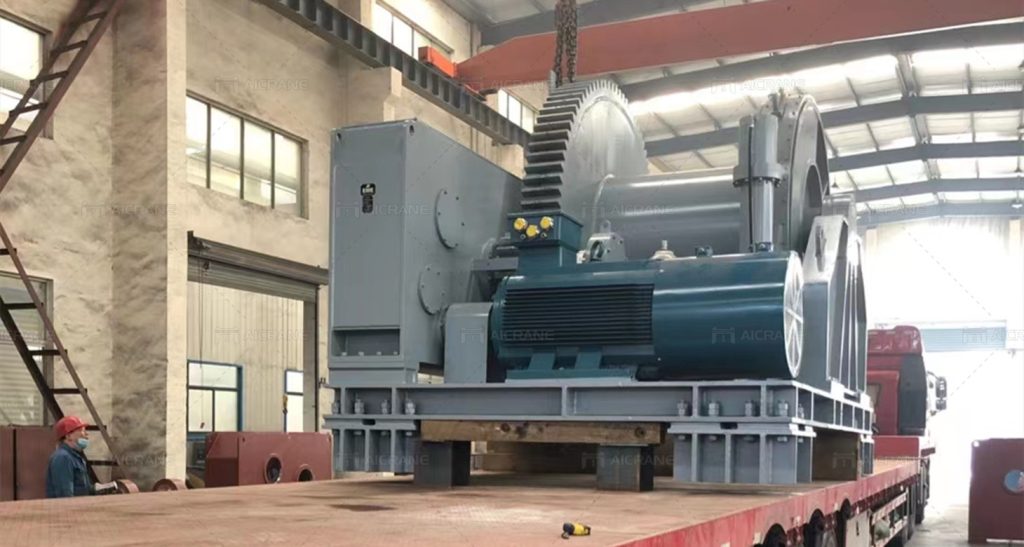The safe transportation of hydraulic winches is a critical aspect of ensuring the integrity of the equipment and the safety of personnel involved. Hydraulic winches are powerful tools widely used in various industries for lifting, pulling, and positioning heavy loads. Whether transporting hydraulic winches locally or over long distances, careful planning, proper securing, and adherence to safety regulations are essential. In this comprehensive guide, we will explore key considerations and best practices for the safe transportation of hydraulic winches.

Pre-Transport Inspection
Before transporting a hydraulic winch, conduct a thorough pre-transport inspection to assess its condition. Examine the winch for any signs of damage, wear, or malfunction. Verify that all components, including hydraulic hoses, cables, and control systems, are in good working order. Address any issues identified during the inspection to ensure the winch is in optimal condition for transportation.
Secure Proper Packaging
Proper packaging is crucial to protect the hydraulic winch from external elements and potential damage during transportation. Secure the winch in a sturdy crate or packaging material that provides adequate protection against vibration, impacts, and environmental factors. Use padding, cushioning, and strapping to immobilize the winch within the packaging, preventing movement during transit.
Compliance with Transportation Regulations
Adhere to local and international transportation regulations when moving hydraulic winches. Familiarize yourself with weight limits, size restrictions, and any specific regulations related to the transportation of heavy machinery. Ensure that the chosen transportation method complies with legal requirements and obtain any necessary permits for oversized or overweight cargo.
Choose Appropriate Transportation Method
Selecting the right transportation method is crucial for the safe and efficient movement of hydraulic winches. Depending on the size, weight, and destination, options may include road transport, sea freight, air freight, or a combination of these. Each method has its considerations, such as route planning, load capacity, and handling requirements. Choose a transportation method that aligns with the specific characteristics of the hydraulic winch and the logistical needs of the project.
Properly Load and Secure the Winch
Loading and securing the hydraulic winch onto the transportation vehicle require careful attention to prevent shifting, tilting, or damage during transit. Use specialized lifting equipment, such as cranes or forklifts, to load the winch onto the vehicle safely. Once loaded, secure the heavy duty winch with robust straps, chains, or other restraints to prevent movement. Distribute the securing points evenly to maintain balance and stability.
Route Planning and Site Assessment
Before embarking on the transportation journey, plan the route and assess the transportation site. Consider factors such as road conditions, clearance heights, weight limits, and any potential obstacles. Identify alternative routes in case of unexpected challenges, and communicate with relevant authorities or agencies to ensure a smooth transit. Site assessments help anticipate and address potential issues before they arise.

Communication and Coordination
Effective communication and coordination among all parties involved in the transportation process are critical. Establish clear communication channels between the transportation team, drivers, and any escorts or support vehicles. Provide detailed information about the hydraulic winch’s dimensions, weight, and any specific handling requirements to ensure that everyone is well-informed and prepared for the journey.
Specialized Handling Equipment
In some cases, the size and weight of hydraulic winches may necessitate the use of specialized handling equipment during transportation. This could include hydraulic trailers, low-loaders, or heavy-duty transport vehicles equipped with features to accommodate oversized and heavy cargo. Ensure that the chosen handling equipment is suitable for the specific characteristics of the hydraulic industrial winch.
Monitor Environmental Conditions
Hydraulic winches are sensitive to environmental conditions, including temperature, humidity, and exposure to corrosive elements. During transportation, monitor and control environmental conditions to prevent damage to the winch. Consider using protective covers or enclosures to shield the winch from adverse weather conditions, and if necessary, implement climate-controlled transport options.
Insurance Coverage
Ensure that the hydraulic winch and its transportation are adequately covered by insurance. Accidents, unforeseen events, or damage during transit can have financial implications, and insurance coverage provides a safety net in such situations. Verify the extent of coverage, including liability, damage, and loss, and choose insurance options that align with the value and risk associated with the hydraulic winch.
Professional Assistance
Seek professional assistance when transporting hydraulic winches, especially for long distances or complex logistical scenarios. Engage experienced logistics and transportation companies with a track record in handling heavy machinery. Professional expertise ensures compliance with regulations, adherence to safety standards, and efficient execution of the transportation process.
Post-Transport Inspection
After reaching the destination, conduct a post-transport inspection of the hydraulic winch. Inspect the equipment for any signs of damage, shifts, or issues that may have occurred during transportation. Address any concerns promptly and, if necessary, conduct functional tests to ensure that the winch is in proper working condition.
The safe transportation of hydraulic winches involves a comprehensive approach that encompasses pre-transport inspections, proper packaging, adherence to regulations, appropriate transportation methods, secure loading and securing, route planning, communication, environmental monitoring, insurance coverage, and professional assistance. By prioritizing safety at every step and following best practices, businesses can ensure the successful and secure transportation of hydraulic winches, preserving their functionality and reliability upon arrival at their destination. Get more information about safe transportation of your winch from your winch manufacturer.